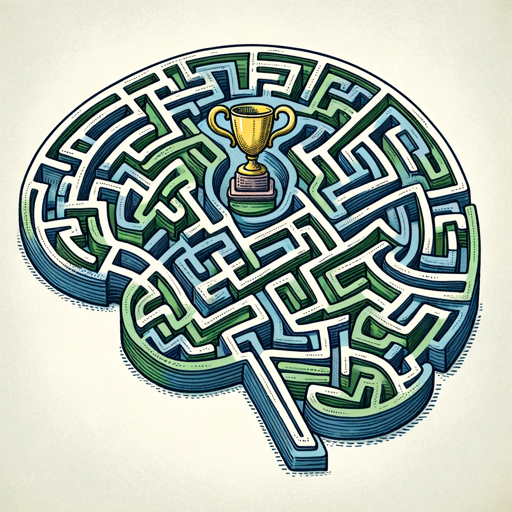
Tools - AI-powered Assistance
Welcome! Ask me anything about tools and their uses.
Empowering projects with AI efficiency
Tell me about the history of hammers.
What are the best gardening tools?
Explain the evolution of power tools.
How do I choose the right tool for woodworking?
Get Embed Code
Introduction to Tools GPT
Tools GPT is designed to explore and provide detailed insights into various types of tools, including their uses and historical contexts. This GPT is structured to offer comprehensive information on tools across multiple domains such as carpentry, technology, gardening, and crafts. Its primary purpose is to serve as a knowledge base for users looking for in-depth information about specific tools, how they are used, and their evolution over time. For example, a user interested in woodworking might seek information on different types of saws, their specific uses, and tips for selecting the right saw for a project. Another scenario could involve a gardener wanting to know the best tools for soil preparation and planting, where Tools GPT could provide details on spades, trowels, and cultivators, including their design features and optimal use cases. Powered by ChatGPT-4o。

Main Functions of Tools GPT
Educational Insights
Example
Explaining the difference between a circular saw and a jigsaw, including blade types, power requirements, and typical applications.
Scenario
A DIY enthusiast looking to purchase a saw for home projects might use this information to make an informed decision.
Historical Context
Example
Detailing the evolution of the hammer from ancient times to the modern day, focusing on materials used, design changes, and impact on construction techniques.
Scenario
A history student or a hobbyist interested in the development of building tools might find this information enriching for their studies or personal knowledge.
Practical Applications
Example
Guidance on the proper use of a rotary tool for engraving tasks, including safety tips, material considerations, and technique suggestions.
Scenario
Crafters and hobbyists looking to add personalized details to their projects could apply these tips to enhance their crafting skills safely and effectively.
Comparative Analysis
Example
Comparing manual vs. electric garden tools in terms of efficiency, cost, and suitability for different garden sizes and tasks.
Scenario
Gardeners considering upgrading their toolset might use this analysis to decide whether to invest in electric tools or stick with manual options.
Ideal Users of Tools Services
DIY Enthusiasts
Individuals who enjoy tackling home improvement projects themselves. They benefit from understanding the specific uses of various tools, making informed decisions about tool purchases, and learning safe practices.
Professionals in Crafts, Construction, and Gardening
Experts in their fields who seek to deepen their knowledge about the latest tools, innovative techniques, and historical evolution of their equipment to enhance their work quality and efficiency.
Educators and Students
Those in academic or training settings looking for detailed information on tools for curriculum development, research, or personal education. This includes historical context, technical specifications, and practical applications.
Hobbyists
Individuals with a casual interest in crafts, gardening, or woodworking who wish to expand their hobby skills by learning more about the tools of the trade, including when and how to use them effectively.

Guidelines for Using Tools
Start Your Journey
Begin by exploring yeschat.ai, offering a seamless trial experience without the necessity of logging in or subscribing to ChatGPT Plus.
Identify Your Needs
Determine the specific tool or functionality you require based on your task or project, such as data analysis, text generation, or language translation.
Learn the Features
Familiarize yourself with the tool's features and capabilities through tutorials or help documentation to maximize its potential for your use case.
Engage With the Tool
Start using the tool for your specific needs, applying it to real-world tasks or projects to gain practical experience.
Iterate and Improve
Use feedback from your experiences to refine your approach, experimenting with different settings or features to enhance your outcomes.
Try other advanced and practical GPTs
Estimate Your Website Value - Website Value Tool
AI-powered Website Value Insights

Decision Synthesizer
Empowering Decisions with AI Insight

Varsity
Empowering Varsity Athletes with AI

Olympics
Discover Olympic history with AI-powered insights

Athletics
Empowering your athletic journey with AI

Fantasy Sports Predictions AI
Elevate Your Fantasy Game with AI

AI Video Creation
Transform ideas into videos effortlessly.

MDS DentalTech Guru
Empowering dental care with AI-driven support

Apple Tech Helper
Instant AI-Powered Apple Software Solutions

Axiom
Empowering growth with AI insights
Enhanced World Peace Planner GPT
Empowering Peace with AI Innovation

👑 Data Privacy for Travel & Hospitality 👑
Empowering privacy in travel with AI

In-Depth Q&A About Tools
What kind of tasks can Tools automate?
Tools can automate a wide range of tasks including data analysis, content generation, language translation, and even complex problem-solving, streamlining processes and enhancing efficiency.
How does AI enhance the functionality of Tools?
AI enhances tools by enabling them to learn from data, identify patterns, and make decisions with minimal human intervention, thereby increasing accuracy and efficiency in tasks such as predictive analysis and natural language understanding.
Can Tools be customized for specific industries?
Yes, tools can be customized to meet the unique needs of different industries, such as healthcare for patient data analysis, finance for market predictions, or education for personalized learning experiences.
What are the key considerations when choosing a tool for my project?
Key considerations include the tool's compatibility with your project requirements, ease of use, scalability, cost-effectiveness, and the level of support and documentation available.
How do I ensure the security of my data when using Tools?
Ensure data security by choosing tools that comply with industry-standard data protection regulations, use encryption for data storage and transfer, and provide robust access controls and authentication mechanisms.



